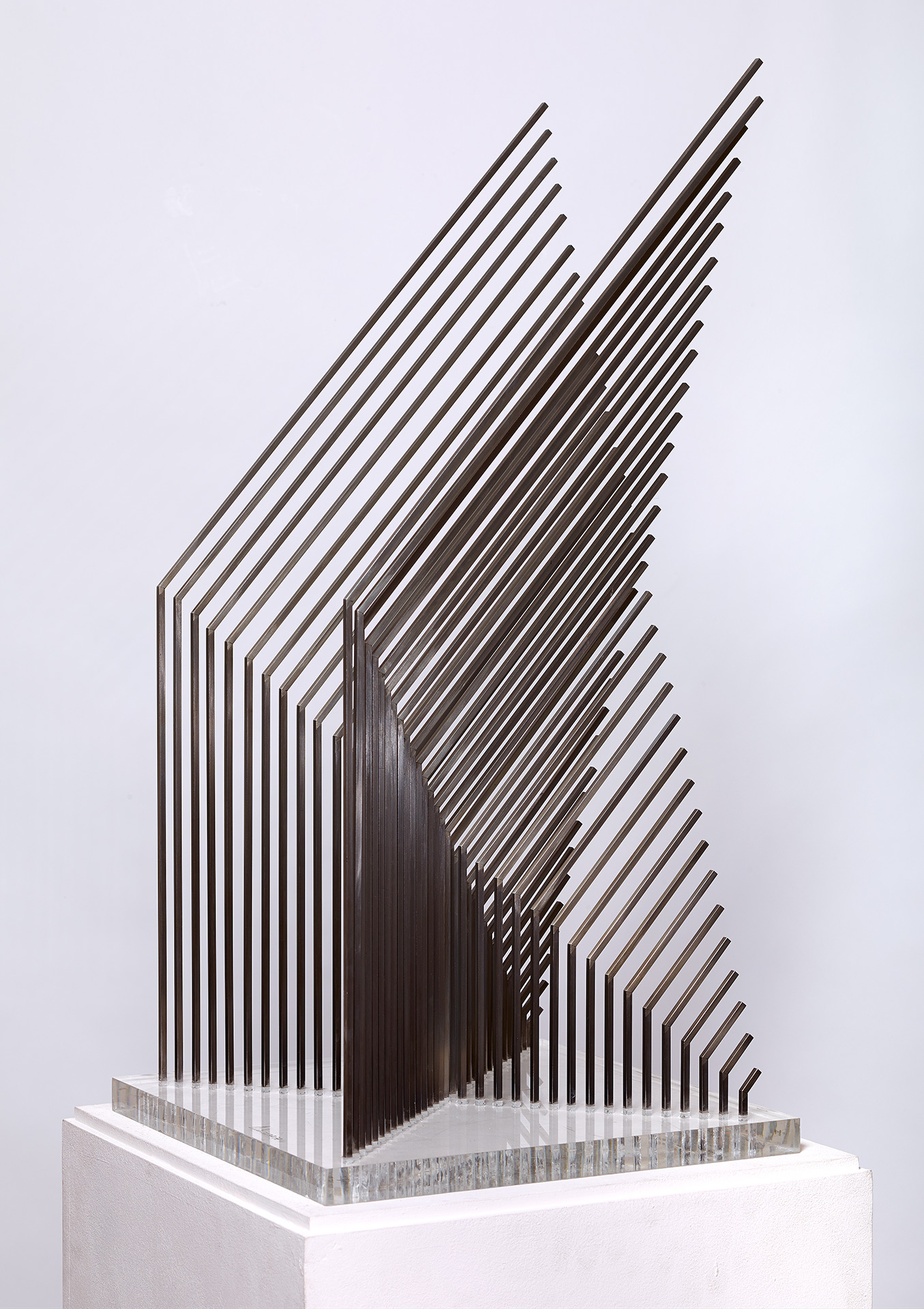
Andreu Alfaro (Valencia, 1929-2012)
Ulysses in Rocafort
1974
WORK INFORMATION
Stainless steel, 75 x 38 x 38 cm.
OTHER INFORMATION
Signed and dated on the base: "Alfaro, 1974".
Andreu Alfaro has gone down in history as one of the sculptors who most decisively, coherently and brilliantly strove to recover the tradition of modern art in Spain after the Civil War. His creative path began with an exploration of the possibilities revealed by Constructivism. His strategy led to a sculpture dominated by the occupation of space, always based on drawing. In the 1960s, this resulted in linear images made of iron bars and cut plates, which in turn were followed by modular compositions of abstract appearance but with an undercurrent of allusion to vaguely pre-existing images, both natural and geometric. By then Alfaro had already revealed his interest in a sculpture that was rigorous (accepting its formal responsibility to the demands of the setting and the materials) and also communicative (able to transmit ideas and contents of human, historical and political experience).
During the 1970s his primary focus was on developing his "generatrices": structures consisting of a series of industrial rods or bars arranged according to a geometric mandate, giving rise to surprising forms that occasionally refer to figurative or metaphorical representations. With the generatrices, thanks to their economy of means, spectacular quality and occasionally symbolic connotations, Alfaro consolidated his status as a sculptor for the public sphere. In the late 1970s he initiated a number of very formally and materially diverse series: he conversed with the Baroque, held thought-provoking exhibitions like De la vida i la mort, la memòria, confronted the human figure in the series El cos humà [The Human Body], explored the world of Goethe, worked with marble to create a surprising revision of Greek sculpture (archaic and classical), and ended up revolving around groups of metal and stone pieces with an obviously metaphorical slant.
As for the works in the Banco Santander Collection, Generatriz 3 [Generatrix 3] is one of the earliest examples of the type of sculpture Alfaro practised in the 1970s. This construction is marked by the formal contrast between the progression of straight lines and the resulting curvature. Its kinetic dimension is linked to the obvious fact that spectators face a totally different abstract figure every time they change their perspective.
Ulises en Rocafort [Ulysses in Rocafort] also plays with multiple points of view, although here we do not see a generatrix but a composition of broken straight lines. And unlike the first work, the title itself indicates a change of attitude: whereas Generatrix 3 refers to the recovery of the early Constructivist avant-garde, this piece speaks to us of a symbolic act (something that would emerge in other generatrices by Alfaro thereafter): Ulysses has returned to his homeland, to Ithaca... or, rather, to Rocafort (a town near Valencia where Alfaro lived). It is a homecoming: the artist returning to his town, his people, the collective experience.
Finally, Charlotte von Stein is part of the series De Goethe y nuestro tiempo [Of Goethe and Our Time], on which Alfaro worked during practically the entire decade of the 1980s. In this context, in which the artist sought to establish a permanent dialogue with the greatest achievements in the history of humanistic culture, Charlotte's appearance reflects his belief that she was the most important woman in Goethe's life. Alfaro dedicated other sculptures in iron and stainless steel to the same character. The figure takes on rather fantastic features: a kind of abstract face, suggestively tilted, atop a neck and a portion of the body, a sensually rounded torso. [Vicente Jarque]

